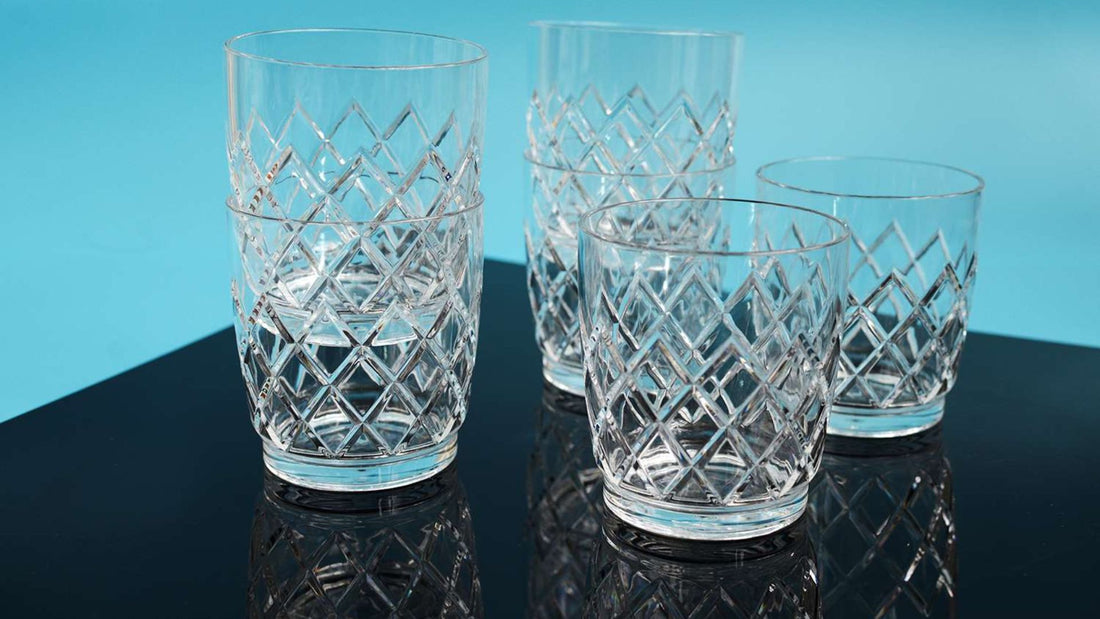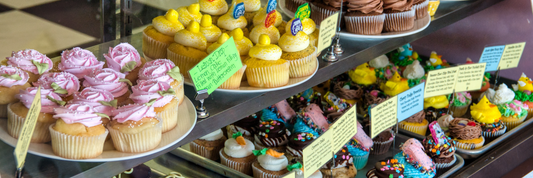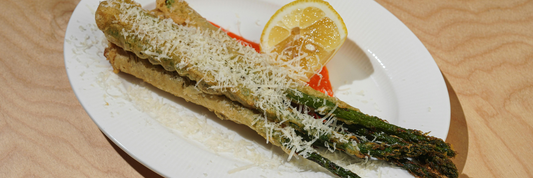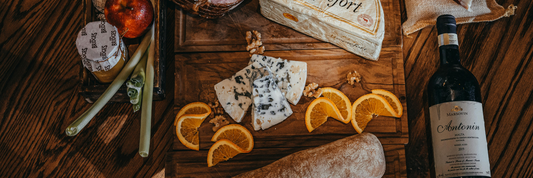To meet the diverse needs and purposes of businesses, plastic cups look like glass are no longer a strange product on the market and are widely chosen. However, when compared to ordinary glass cups, there are still certain differences. So, should you choose this type of cup instead of traditional glass cups? And what to pay attention to? This article will help you have the clearest answer.
- Cocktail Glass Differences: Shape, Size, and Material
- Glass Or Plastic Jar: Which Is Better for Food Storage?
Plastic Cups Look Like Glass Overview
Before considering if your business should choose glass cup or plastic cups look like glass, it's crucial to establish a solid understanding of these versatile drinkware options. This guide will delve into the intricacies of plastic cups that resemble glass, equipping you with the knowledge to make informed decisions.
Alternatives Name of Plastic Cups Look like Glass
Plastic cups that resemble glass are often referred to by various names, each highlighting their striking resemblance to their glass counterparts. Here's a glimpse into their diverse names:
- Plastic Glassware: This broad term encompasses all plastic cups that emulate the appearance of glass.
- Acrylic Cups: Acrylic is a common material used in plastic cups that mimic glass, known for its durability and clarity.
- Tritan Cups: Tritan, a BPA-free plastic, is gaining popularity due to its exceptional clarity, scratch resistance, and shatterproof nature.
- Polycarbonate Cups: Polycarbonate, another BPA-free option, offers excellent impact resistance and is often used for reusable water bottles.
Plastic Cups Look like Glass Material
Plastic cups look like glass can be made from different material, including:
- Tritan: The predominant choice, lauded for its unparalleled clarity, resilience, shatter resistance, and commitment to BPA-free construction.
- PETG (Polyethylene Terephthalate Glycol): Offering a balance of durability and transparency, though potentially less scratch-resistant than Tritan. Ideal for situations where occasional bumps are more likely than sharp impacts.
- SAN (Styrene Acrylonitrile): Frequently employed in reusable water bottles, SAN boasts BPA-free properties and reasonable clarity, but might not possess the same level of strength as other options. A budget-friendly option for casual use.

Plastic Cups Look like Glass Characteristics
Plastic cups designed to resemble glassware offer a unique blend of functionality and aesthetics. Here's a breakdown of their key characteristics:
Enhanced Safety:
- Shatterproof Design: A critical advantage, particularly in environments with children or around pools. Unlike glass, these cups won't break into dangerous shards if dropped, minimizing the risk of injury.
- Improved Impact Resistance: They can withstand bumps and falls more effectively than glass, significantly reducing the likelihood of breakage during everyday use.
Exceptional Durability:
- Superior Scratch and Chip Resistance: Compared to glass, plastic cups exhibit improved resistance to scratches and chips, helping them maintain their pristine appearance for longer.
- Lightweight Construction: These cups are significantly lighter than their glass counterparts, facilitating easier handling and improved safety, especially for children or individuals with limited dexterity.
Increased Convenience:
- Dishwasher Safe (Typically): Many plastic cups replicating glassware are dishwasher safe (always verify label instructions), streamlining the cleaning process after use.
- Enhanced Versatility: They come in a wide range of sizes and styles, catering to any beverage, hot or cold. Some even feature double-walled insulation to effectively maintain desired drink temperatures.
Additional Attributes:
- High Clarity: High-quality plastic cups can achieve remarkable clarity, offering an aesthetic that closely resembles genuine glass, ideal for maintaining a sophisticated presentation.
- Cost-Effective: In general, plastic cups are a more affordable option compared to glass, making them a budget-friendly choice for both personal and commercial use.
For these reasons, plastic cups look like glass have a wide range of applications.
Application of Plastic Cups Look like Glass
- Domestic Use: Ideal for enjoying water, coffee, tea, juice, smoothies, and more within the comfort of your home.
- Elevating the Restaurant, Cafe, and Bar Experience: Enhancing the presentation of beverages served to customers, while also reducing the risk of breakage compared to glass.
- Event and Conference Essentials: Providing a practical and stylish solution for serving water, soft drinks, and other refreshments, especially in settings where glass might pose safety concerns.
- Perfect for Outdoor Activities: Well-suited for picnics, camping trips, and adventures on the go. Their lightweight design and shatterproof nature make them ideal companions for outdoor activities.
Overall, plastic cups look like glass have outstanding features that make them become useful tool and ideal to replace glass cups in many situation. But should you choose these cups to replace the traditional glass cups? Let’s find out in the next part.

Should You Choose Plastic Cups Look Like Glass or Glass Cup?
Selecting the ideal drinkware material hinges on your primary use case and specific priorities. This section delves into the key distinctions between plastic cups designed to resemble glass and traditional glass cups to facilitate an informed decision.
Here is a table that comparing the plastic cups look like glass and glass cup
|
Feature |
Plastic Cups Mimicking Glass |
Traditional Glass Cups |
|
Safety |
Shatterproof, minimizing injury risk |
Susceptible to breakage, posing a safety hazard |
|
Durability |
Enhanced resistance to bumps and falls |
More prone to breakage during use |
|
Convenience |
Often dishwasher-safe, diverse sizes and insulation options |
May require handwashing, limited to single-wall construction |
|
Weight |
Lighter for easier handling |
Heavier weight |
|
Cost |
Generally more affordable |
Typically more expensive |
|
Clarity |
High-quality varieties achieve significant clarity |
Superior clarity |
|
Heat Resistance |
May not be suitable for very hot beverages |
Can handle boiling hot beverages |
|
Health |
Potential for trace chemical leaching |
Inert, no leaching concerns |
|
Sustainability |
Not recyclable |
Recyclable |
From the the differences above, choosing between plastic cups that look like glass and glass cups depends on your priorities and how you'll be using them.
Go for Plastic Cups if:
- Safety is paramount: They're shatterproof, ideal for households with children or around pools where broken glass can be dangerous.
- Durability is a concern: Plastic is less likely to break from bumps or falls compared to glass.
- Convenience is key: Many are dishwasher safe and come in various sizes for any drink, hot or cold (some even insulated).
- Weight matters: Plastic is significantly lighter, making them easier to handle, especially for children or the elderly.
- Cost is a factor: Generally, plastic cups are more affordable than glass.
Opt for Glass Cups if:
- Absolute heat resistance is needed: Glass can handle boiling hot beverages without any issues.
- Clarity and aesthetics are important: Glass offers superior clarity and a timeless, elegant look.
- Health is a top priority: Glass is completely inert and doesn't leach chemicals, even with hot liquids.
- Sustainability is a concern: Glass is recyclable, while plastic has an environmental footprint.
Where to Buy Plastic Cups Look Like Glass?
It’s not difficult to buy plastic cups look like glass. Here are some general places where you can find plastic cups that look like glass:
- Online retailers: Major online retailers like Amazon, Walmart, and Target offer a wide selection of plastic cups that look like glass. You can search for them using keywords like "plastic cups look like glass," "Tritan cups," or "acrylic drinkware."
- Home goods stores: Stores specializing in home goods and kitchenware often carry a variety of plastic cups that look like glass. These might include Bed Bath & Beyond, Target, or Walmart.
- Department stores: The kitchenware section of department stores like Macy's, Kohl's, or JCPenney might have some plastic cups that look like glass.
- Grocery stores: Larger grocery stores may offer a limited selection of plastic cups that look like glass in their kitchenware section.
- Restaurant supply stores: If you're looking for larger quantities or specific styles, restaurant supply stores can be a good option.
When choosing a retailer, consider factors like price, selection, brand reputation, and customer reviews to find the most suitable ones for your business needs and requirements.
Conclusion
Plastic cups look like glass have carved a niche for themselves in the drinkware world. They offer a compelling combination of safety, durability, convenience, and affordability. While they may not quite match the timeless elegance and heat resistance of traditional glass cups, their practicality and versatility make them a popular choice for many households and businesses.




